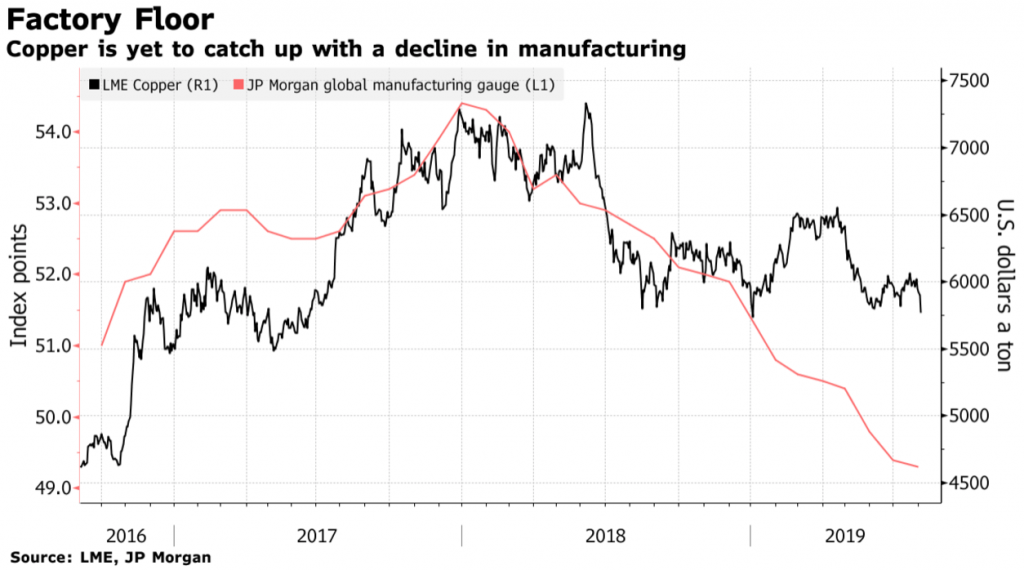Dr. Copper is flashing a warning signal for the global economy.
Like a teenage romance, copper has traded on-again, off-again for the past year. But things are starting to feel a whole lot more like we’re on a rollercoaster ride.
On Monday, Copper futures fell to a two-year low as fears grew around what a full-blown trade war between the U.S. and China would do to the global economy.
The metal hit a low of 2.5315, its lowest level since June of 2017. As of this writing, it has recovered slightly to 2.5990.

“The combination of a disappointing Fed and an escalating trade war appears to be too much for this fragile global economy. The summer breakdown in copper suggests that volatility will remain a major theme in the markets in H2’19, and the odds of a recession are steadily rising,” said Top Essaye of The Steven Report.
The market is becoming increasingly focused on the damage caused by the havoc wreaked by a trade dispute between the world’s two largest economies. And the broad applications of copper mean the metal is particularly vulnerable to the synchronized tailspin being seen in everything from car-making and earth-moving equipment to commercial property and advanced electronic components.
“What the hard data is telling us is that end-use demand is slow and in many places getting kicked quite hard,” said Oliver Nugent, a metals strategist at Citigroup. “China’s commodity-intensive economy is as weak as it’s been in recent history.”
Even at two-year lows, copper hasn’t quite kept pace with the dramatic decline in global manufacturing over the course of this year. Because of this, Macquarie analysts say there’s more downside ahead for the metal as prices again move in tandem with demand trends.

Last week, the Fed cut interest rates for the first time since the 2008 financial crisis on concerns about global economic uncertainty and worries about the ongoing trade war.
But the breakdown in copper last week was “by far the most important development,” according to Essaye, and “markets were clearly too optimistic given the multiple risks in the macro backdrop.”
Morgan Stanley said earlier this week that should the trade war escalate any further, a global recession could hit within the next nine months.
“What China represents is a major deflationary force, not only for world growth but for Dr. Copper and commodities in general,” said Bannockburn Global Forex’s chief market strategist, Marc Chandler.
Copper has long been considered a barometer of economic health considering its use in both homebuilding and commercial construction. Bannockburn says that if China’s stimulus can’t outweigh the trade war, there will be an oversupply of copper that the world can’t absorb, which will weigh on the metal’s price.
But Copper isn’t the only shiny metal flashing warning signs.
Gold, which is considered a safe haven asset in times of economic uncertainty, has been benefitting from all of the turmoil in the market over the past week. The metal surged above $1,500 per ounce on Wednesday, its highest level in more than six years.
The gains in gold brought the metal’s return so far this year to just above 18%, which is higher than the S&P 500’s return of roughly 14% year-to-date.